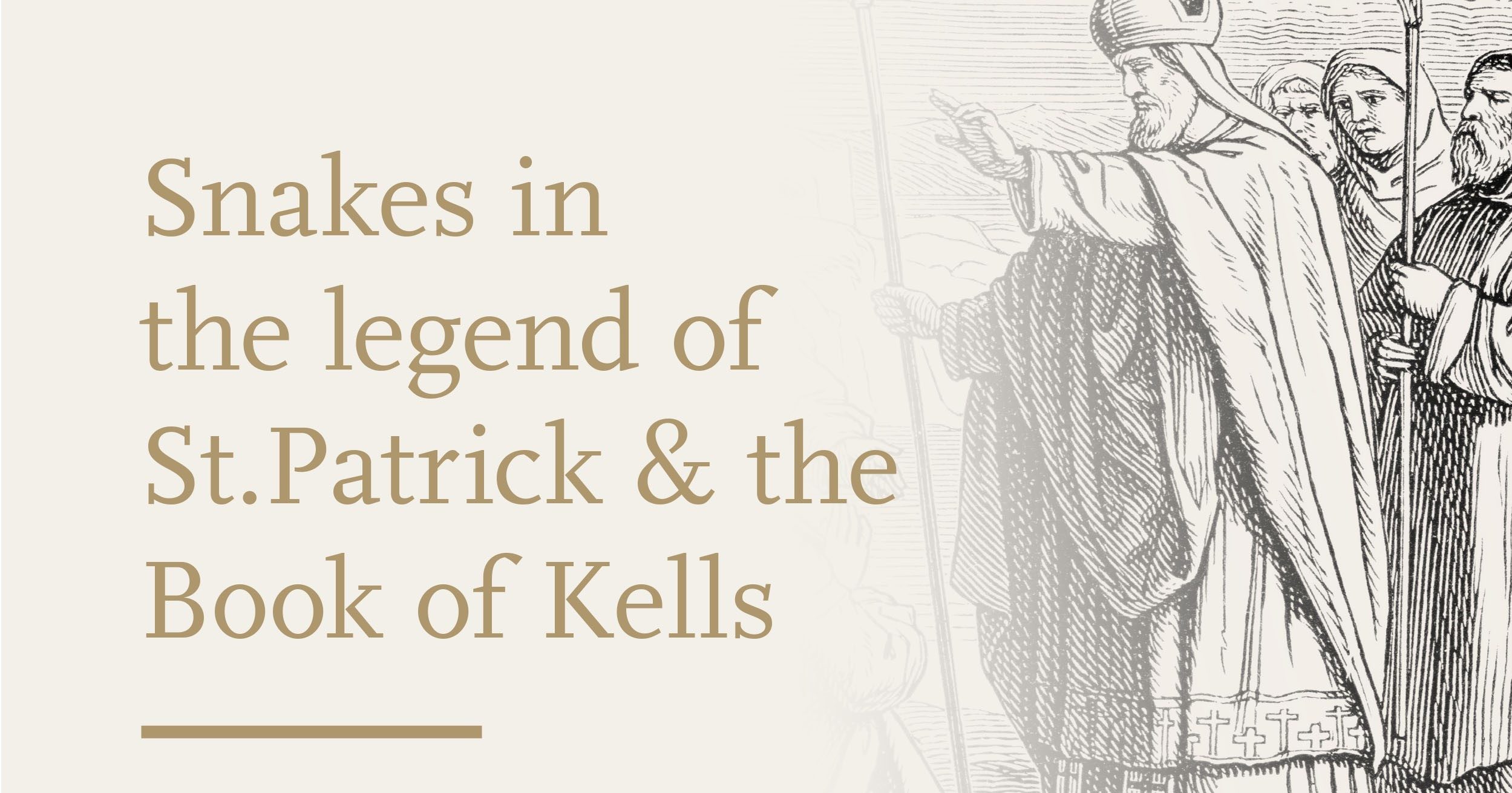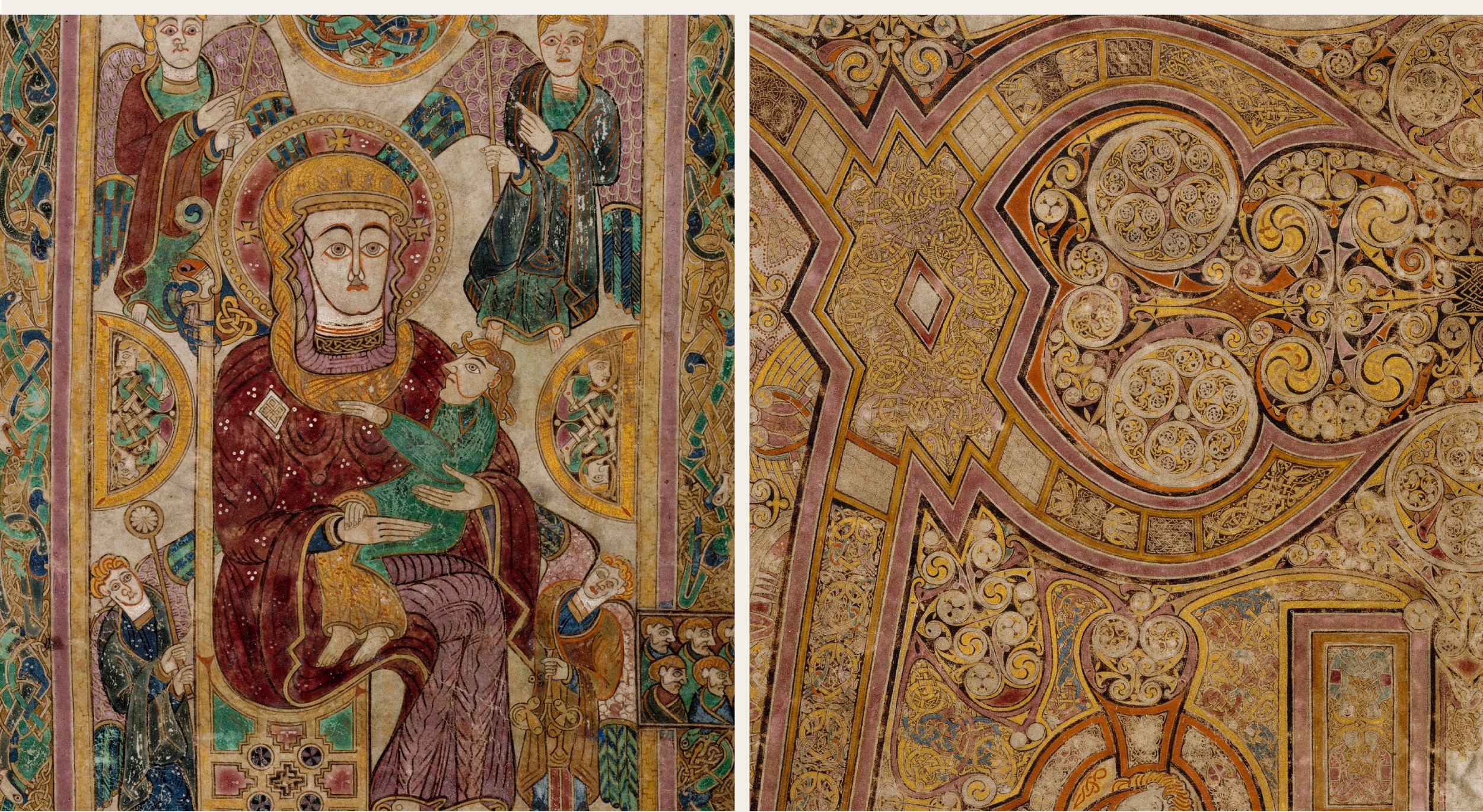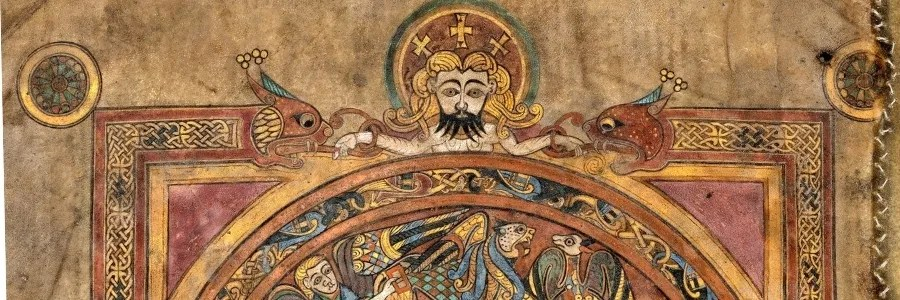
Evidence suggests that there were never any snakes in post-glacial Ireland, however snakes appear prominently throughout ancient Irish mythology.
One of the most famous stories about St. Patrick, is that he is responsible for banishing all the snakes in Ireland. Legend has it that he chased them into the sea after they attacked him during a 40-day fast he was undertaking. Snakes were sacred to the high ranking members of Celtic society and their banishment may be a symbol for St. Patrick removing their pagan influence from Ireland.
Snakes appear prominently throughout the Book of Kells, written about 800AD, approximately 400 years after St. Patrick is reputed to have brought Christianity to Ireland.
The Book of Kells snakes take on a whole new meaning, since they were illustrated in early Christian Ireland. The snakes that weave their way through the decoration in the Book of Kells symbolise Christ’s resurrection as the snake is ‘reborn’ when it sheds its old skin.

The Virgin and Child are depicted in the Book of Kells (folio 7v), flanked by the archangels Michael, Gabriel, Raphael and Uriel. The grouped figures are surrounded by a border composed of interwoven snakes.
The Chi Rho page (folio 34r) is one of the most elaborate and enigmatic pages in the Book of Kells. There are a multitude of snakes twisting and curving across the page forming part of the decorative patterns. The closer you look the more snakes you will see.

